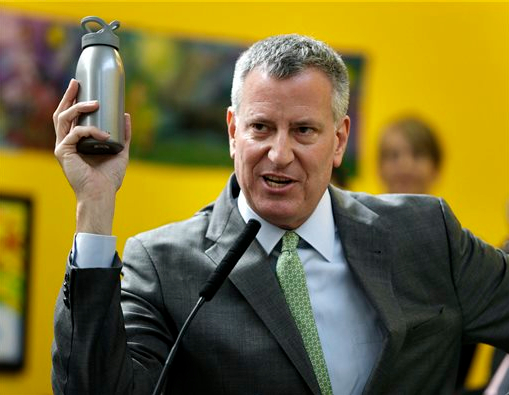De Blasio unveils sweeping environmental plan on Earth Day

New York City mayor Bill de Blasio holds up a reusable water bottle as an example of a change he made for the environment during a news conference in the Bronx on Wednesday. New York City, in a far-reaching effort to limit its impact on the environment, marked Earth Day on Wednesday by announcing a plan to reduce its waste output by 90 percent by 2030. AP Photo/Seth Wenig
The nation’s biggest city, in a far-reaching effort to limit its impact on the environment, marked Earth Day on Wednesday by announcing a plan to reduce its waste output by 90 percent by 2030.
Mayor Bill de Blasio unveiled his sweeping OneNYC plan, which includes an overhaul of the city’s recycling program, incentives to reduce waste and tacit support for the City Council’s plan to dramatically reduce the use of plastic shopping bags.
New York, with about 8.5 million residents, would be the largest city in the Western Hemisphere to adopt such a plan, which aims to reduce the amount of its waste by more than 3 million tons from its 2005 level of about 3.6 million tons.
